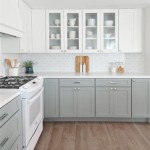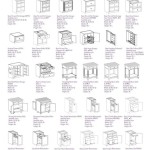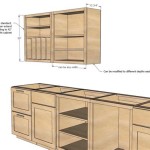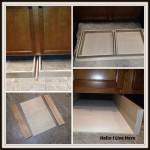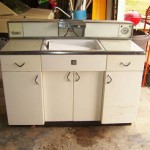Estimate For Kitchen Cabinet Installation: A Comprehensive Guide
Kitchen cabinet installation is a significant home improvement project that can dramatically enhance both the functionality and aesthetic appeal of a kitchen. Understanding the factors influencing the overall cost is crucial for effective budgeting and project planning. This article provides a detailed exploration of the elements that contribute to a kitchen cabinet installation estimate, enabling homeowners to make informed decisions.
The cost of kitchen cabinet installation is not a fixed figure. It varies widely based on several key considerations, encompassing the type of cabinets selected, the scope of the installation work, and the prevailing labor rates in the specific geographic area. A meticulous assessment of these factors is necessary to arrive at a realistic and accurate estimate.
Cabinet Selection: A Primary Cost Driver
The selection of cabinet type constitutes a primary cost driver in any kitchen cabinet installation project. Cabinets are generally categorized into three primary types: stock, semi-custom, and custom. Each category offers a distinct combination of price, quality, and design flexibility, thereby impacting the overall project expense.
Stock cabinets are pre-manufactured in standard sizes and styles, representing the most economical option. These cabinets are mass-produced, allowing for lower production costs and faster availability. Stock cabinets are typically available at home improvement stores and online retailers. While they offer a budget-friendly solution, their limited customization options may not suit every kitchen layout or design preference.
Semi-custom cabinets offer a middle ground between stock and custom options. These cabinets begin as stock units but allow for modifications to dimensions, finishes, and hardware. Semi-custom cabinets provide greater flexibility in design while remaining more affordable than fully custom cabinets. Homeowners can often select from a range of door styles, wood species, and stains, enabling a personalized look without the premium price tag of custom-built solutions.
Custom cabinets are built to order, offering the highest degree of design flexibility and personalization. These cabinets are tailored to the exact dimensions and specifications of the kitchen, allowing for unique layouts, unconventional storage solutions, and distinctive design details. Custom cabinets are typically crafted by experienced cabinetmakers or millworkers, and their superior craftsmanship and bespoke nature command a higher price point. While custom cabinets represent a significant investment, they provide an unparalleled level of customization and quality.
Beyond the category of cabinet, the materials used in their construction significantly impact the overall cost. Solid wood cabinets, particularly those crafted from hardwoods like maple, cherry, or oak, are generally more expensive than cabinets made from plywood or particleboard. The finish applied to the cabinets – whether it is a painted, stained, or glazed finish – also contributes to the cost, with more elaborate finishes requiring more labor and specialized materials.
Hardware, including knobs, pulls, hinges, and drawer slides, adds another layer to the expense. High-end hardware options, such as soft-close hinges and full-extension drawer slides, can significantly enhance the functionality and user experience of the cabinets but will also increase the overall cost.
Scope of Installation Work: Influencing Labor Costs
The scope of the installation work directly influences the labor costs associated with the project. The complexity of the installation, the condition of the existing kitchen, and the presence of any structural or electrical modifications will all impact the amount of labor required and, consequently, the overall estimate.
A straightforward cabinet replacement involving the removal of old cabinets and the installation of new cabinets in the same configuration will typically incur lower labor costs than a more complex project that involves significant modifications to the kitchen layout. Rerouting plumbing, electrical wiring, or gas lines can add considerable expense to the project. Similarly, if the existing kitchen walls or floors are not level, additional work may be required to ensure that the cabinets are installed properly, adding to the labor hours.
The demolition and removal of existing cabinets is an integral part of the installation process and often included in the overall estimate. The disposal of old cabinets can involve additional fees, particularly if special handling is required due to the presence of hazardous materials like lead paint or asbestos. The preparation of the installation site, including patching walls, leveling floors, and ensuring that the surfaces are clean and ready for cabinet installation, is also a crucial step that can add to the labor costs.
Installation tasks such as installing crown molding, light rails, or under-cabinet lighting can also inflate the labor costs. The precision required for these tasks necessitates the expertise of skilled installers and may require additional time and special tools. Backsplash installation, countertop installation, and appliance installation are often separate line items in the estimate, as these tasks typically require specialized skills and may be performed by different subcontractors.
The complexity of the cabinet design also impacts the installation costs. Cabinets with intricate details, such as glass doors, decorative panels, or built-in organizers, can require more time and skill to install properly. Similarly, installing cabinets in challenging spaces, such as corners or around obstructions, can increase the labor required.
Geographic Location and Labor Rates
Geographic location plays a significant role in determining the cost of kitchen cabinet installation. Labor rates, material costs, and local market conditions vary considerably from one region to another. Areas with a higher cost of living typically have higher labor rates, which can significantly impact the overall project estimate.
Urban areas and metropolitan centers tend to have higher labor costs than rural areas or smaller towns. The demand for skilled tradespeople is often higher in urban areas, driving up the compensation rates for installers, plumbers, electricians, and other contractors. Material costs, such as lumber, plywood, and hardware, may also be higher in urban areas due to transportation costs and limited storage space.
Local regulations and permitting requirements can also impact the overall project cost. Some jurisdictions require permits for kitchen renovations, and the fees associated with these permits can add to the expense. Compliance with local building codes and safety standards may also require additional work or materials, potentially increasing the overall estimate.
Seasonal variations can also influence labor rates and material costs. The demand for home improvement services often peaks during the spring and summer months, potentially leading to higher prices as contractors become busier. Conversely, labor rates may be slightly lower during the off-season, such as the fall and winter months, when demand is typically lower.
It is recommended to obtain multiple estimates from different contractors in your local area to gain a comprehensive understanding of the prevailing labor rates and material costs. Comparing estimates from different contractors can help identify discrepancies and ensure that the proposed price is fair and competitive.
Beyond these primary elements, several other considerations can influence the final estimate for kitchen cabinet installation. These factors, while perhaps less prominent, can still contribute to the overall cost and should be factored into the budgeting process.
Unexpected issues discovered during the demolition or installation process can lead to change orders and additional expenses. These issues can include hidden structural damage, plumbing or electrical problems, or the presence of asbestos or lead paint. A contingency fund should be set aside to cover any unexpected costs that may arise during the project.
The level of service provided by the contractor can also influence the overall cost. Some contractors offer a turnkey solution, handling all aspects of the project from design to installation, while others may only provide installation services. The scope of services included in the estimate should be clearly defined to avoid misunderstandings and ensure that all necessary tasks are covered.
The warranty offered on the cabinets and the installation work can also impact the overall value of the project. A comprehensive warranty provides peace of mind and protects against defects in materials and workmanship. However, warranties may vary in terms of coverage and duration, so it is important to carefully review the terms and conditions before making a decision.
Financing options can also influence the overall cost, particularly if the project is being financed through a loan or credit card. Interest rates and fees can add to the total expense, so it is important to shop around for the best financing terms and consider the long-term cost of borrowing money. Home equity loans, personal loans, and credit cards are all potential financing options for kitchen cabinet installation projects.
Estimates for kitchen cabinet installation should always be presented in a written format, detailing the scope of work, the materials being used, and the associated costs. The estimate should clearly outline all labor charges, material costs, permit fees, and any other expenses related to the project. A reputable contractor will be transparent about pricing and willing to answer any questions or concerns about the estimate.
Understanding the factors influencing the cost of kitchen cabinet installation allows homeowners to engage in a more informed decision-making process. By carefully considering the type of cabinets selected, the scope of the installation work, and the prevailing labor rates in the local area, homeowners can effectively budget for their kitchen renovation project and achieve their desired aesthetic and functional outcomes.

Editable Sample Estimate For Kitchen Remodel Bathroom Cabinets Estima Cost

How Much Do Custom Cabinets Cost

Kitchen Cabinets Estimate Template Quote Remodeling Excel Proposal Templates

Kitchen Cabinets Per Li Foot Granite Quartz Countertops Factory

2024 Cost Of Kitchen Cabinets Estimate Cabinet S Remodeling Calculator

What Is The Average Kitchen Cabinet Cost

What Does An Average Kitchen Cost Superior Cabinets

What Is The Average Kitchen Cabinet Cost

How Much Does A Kitchen Remodel Cost 2024 Average

Kitchen Cost Estimate Sheet Calculator
Related Posts


